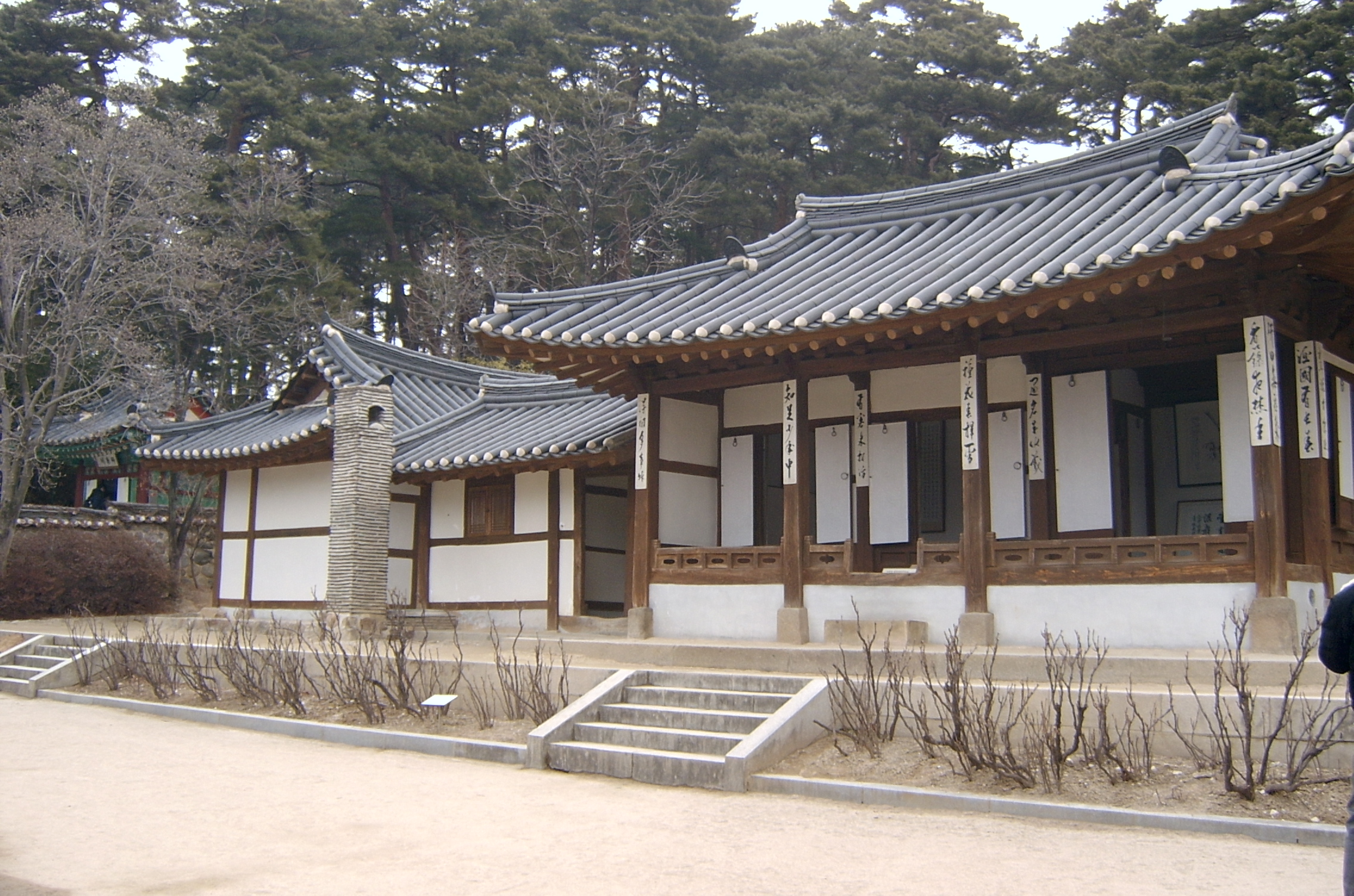- Hanok
caption=Ojukheon inGangneung ,South Korea
hangul=한옥
hanja=韓屋
rr=hanok
mr=hanokHanok is a term to describe Korean traditional houses. Korean architecture lends consideration to the positioning of the house in relation to its surroundings, with thought given to the land and seasons. The interior structure of the house is also planned accordingly. This principle is also called "Baesanimsu" (배산임수), literally meaning that the ideal house is built with a mountain in the back and a river in the front, with the "
ondol " heated rock syhouses are l stem for heating during cold winters and a wide "daecheong" (대청) front porch for keeping the house cool during hot summers. Houses differ according to region. In the cold northern regions of Korea, houses are built in a closed square form to retain heat better. In the central regions, houses are 'L' shaped. Houses in the southernmost regions of Korea are built in an open 'I' form. Houses can also be classified according to class and social status.cite web|url=http://www.encyber.com/search_w/ctdetail.php?gmasterno=740893&contentno=740893 |title=한옥 韓屋|publisher=Doosan Encyclopedia |language=Korean |accessdate=2008-05-07]Gallery
Characteristics
The environment-friendly aspects of traditional Korean houses range from the structure's inner layout to the building materials which were used. Another unique feature of traditional houses is their special design for cooling the interior in summer and heating the interior in winter. Since Korea has hot summers and cold winters, the 'Ondol(Gudeul),' a floor-based heating system, and 'Daecheong,' a cool wooden-floor style hall were devised long ago to help Koreans survive the frigid winters and to block sunlight during summer. These primitive types of heating and air-conditioning were so effective that they are still in use in many homes today¹). The posts, or 'Daedulbo' are not inserted into the ground, but are fitted into the corner stones to keep Hanok safe from earthquakes.
Materials
The raw materials used in Hanok, such as soil, timber, and rock, are all natural and recyclable and do not cause pollution. Hanoks have their own tiled roofs(Giwa), wooden beams and stone-block construction. Cheoma is the edge of Hanok's curvy roofs. The lengths of the Cheoma can be adjusted to control the amount of sunlight that enters the house. Hanji(korean traditional paper) that lubricated with the bean oils has its floor waterproof and polish. Windows and doors with Hanji make it beautiful and breathable.
Regional differeces
The shapes of Hanok differ regionally. Due to the warmer weather in the southern region, Koreans built Hanok in a straight line like the number 1. In order to allow good wind circulation, there are open wooden floored living area and many windows. The shape of the most popular Hanok in the central region is like letter "L" or Korean letter "ㄱ", an architectural mixture of the shapes in the northern and the southern regions. Hanoks in the cold northern region, are box-shaped like Korean letter "ㅁ" so that it would be able to block the wind flow in building Hanoks. They does not have an open wooden floored area but the rooms are all joined together.
Differeces according to social class
The structure of Hanok is also classified according to social class. Typical Yang-ban(upper class) houses with Giwa(tiled roof) emphasized not only the function of the house, but also great artistic value. On the other hand, the houses of the working classes with Choga(the roof plaited by rice straw) were built in a functional way.
ee also
*
Ondol
*Bukchon Hanok Village
*Namsangol Hanok Village References
External links
*ko [http://www.hanok.org/ Hanok Cultural center]
Wikimedia Foundation. 2010.

